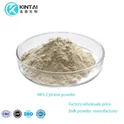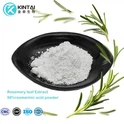As one of the most widely consumed beverages globally, coffee offers an array of bioactive compounds that may benefit health. One such phytochemical generating buzz is chlorogenic acid - a polyphenol antioxidant predominantly found in coffee beans. But how much of this important plant compound actually remains in your morning cup? Getting to grips with natural variation and the brewing factors that alter chlorogenic acid levels provides valuable insights.
What is Chlorogenic Acid?
Chlorogenic acid constitutes a family of related caffeic acid derivatives formed in coffee beans and other plants. Along with other antioxidant phenolics, chlorogenic acids bolster coffee's potential anti-inflammatory, anti-carcinogenic and blood sugar regulating effects linked to reduced risks of chronic illness (1).
Quantifying concentrations in different coffees is key for connecting content to overarching nutritional impacts. While numerous related compounds exist, 5-caffeoylquinic acid makes up 75-100% total chlorogenic acids in most coffee species (2).
How Much Chlorogenic Acid is in a Cup of Coffee?
Reported chlorogenic acid levels in unroasted green coffee beans range considerably across species - from 2-7 grams per 100 grams dry weight. Robusta beans sit at the higher end of this spectrum, containing up to twice as much chlorogenic acid as Arabica varieties (1).
For brewed coffee, a frequently cited estimate suggests an average 226 milligrams total chlorogenic acid per 200 milliliter cup. However, actual concentrations differ substantially depending on bean composition, roasting methods, grind size, and brewing processes (2).
A literature review encompassing data for over 1900 coffee products found 5-caffeoylquinic acid, the most abundant chlorogenic acid form, at levels between 70-350 milligrams per average cup among common household preparation techniques from pre-ground beans. Wide variability emerges from differences in coffee bean species, origin, processing parameters, storage conditions, and measurement methods across studies (3).
For example, one analysis of retail coffees showed light roasted Arabica beans retained the most chlorogenic acid - up to 30-40% higher amounts than dark roasts. Finer grinding and greater extraction pressure during espresso preparation also increased chlorogenic acid in the final beverage compared to drip methods (4).
Many interdependent production factors from crop genetics to brewing alter final chlorogenic acid concentrations substantially. Better standardization of preparation workflows optimized for maximal chlorogenic acid retention could aid delivering its associated health benefits more consistently.
Influencing Factors and Processing Effects
Starting chlorogenic acid content drops substantially for nearly all coffee types and brands during standard roasting protocols necessary for flavor and aroma development. Light roasts retain slightly more than darker French roast profiles - but between 20-60% generally gets modified or degraded at lengths over 4 minutes (5). These changes continue with storage length and conditions for roasted whole beans or grounds.
Brewing procedures then further influence chlorogenic acid extraction out of grounds depending on factors like water temperature, particle size, brew duration and filtering specifics. For example, French press pots retain more fine particles compared to filtered drip methods. Yet no guidelines currently optimize parameters for maximizing chlorogenic acid powder delivery into finished drinks.
What Does Chlorogenic Acid Do to the Body?
Upon entering systemic circulation either intact or as absorbed caffeic acid metabolites, evidence suggests chlorogenic acid helps neutralize dangerous free radicals triggering inflammation, shielding against oxidative damage and related conditions like heart disease, neurodegeneration, cancer, obesity and diabetes (1,6).
Chlorogenic acid may also support healthy blood sugar regulation by delaying glucose absorption in the gut through inhibitory effects on digestive enzymes and transporters. Findings remain preliminary - but daily intakes over 200 milligrams temporarily lowered post-meal glucose spikes by over 15% in small trials, also enhancing insulin sensitivity (7).
Research Studies and Findings
While numerous studies characterize chlorogenic acid contents among various coffee species, few have systematically assessed effects of specific processing parameters on its stability from bean to final brewed product. Recent efforts reportARABICA light roasts retained 33% more original green bean chlorogenic acid than darker options when using a fluidized bed roaster (5).
Additional work found cold brew methods extracted around 30% less 5-caffeoylquinic acid from grounds versus hot drip preparations (8). However, lacking optimization around maximizing chlorogenic acid delivery for potential health benefits constitutes an area needing refinement through additional inquiry.
Which Coffee Has the Most Chlorogenic Acid?
Pinpointing any singular coffee variety with the absolute highest chlorogenic acid content remains challenging due to complex interactions between species, origin, processing methods and brewing specifics. However, some broad generalizations based on current evidence allow reasonable conjecture.
Across published research, green Robusta coffee beans prior to roasting demonstrate markedly higher baseline chlorogenic acid levels - upwards of 7.5 grams per 100 grams mass versus 2.5-4 grams for Arabica. Yet harsher, longer roasting protocols traditionally used for Robusta drastically reduce final concentrations post-brewing closer to Arabica counterparts.
Opting for an Arabica light or medium roast using a slow, low-temperature fluid bed roaster retains more chlorogenic acids intact than high heat commercial drum roasters better optimized for flavor over nutrition. One study recorded 200 milligrams more chlorogenic acid per serving for slow light roasts - a 30% increase versus dark. Gentler ambient air roasting avoids degraded bean surface trapioxidant loss.
Lastly, choosing close-to French Press coarse grind sizes and manual steeping preparation helps extract 20-30% higher chlorogenic acid than rapid paper filtered methods. Cold brewing also proves less degradative than hot, extending stability.
So while no singular "highest" chlorogenic coffee exists currently, lightly roasted, coarsely ground Arabica beans gently processed shortly after roasting and steeped gently cool offer a reasonably evidence-based starting point preference. But personalized brewing factors and real-world testing should complement recommendations for maximization.
What are the Side Effects of Chlorogenic Coffee?
In moderation with typical daily intakes below 500 milligrams chlorogenic acid, coffee consumption and its array of bioactive phytochemicals are generally regarded as safe with a low risk profile in healthy individuals. However, those with underlying heart conditions or hypertension should take caution regarding high habitual coffee intake until consulting physicians given possible compounding cardiovascular interactions (9).
Chlorogenic acid constitutes an important phytochemical contributor to coffee's expansive health attributes. While amounts vary widely, consumer choices before and after roasting plus optimized brewing techniques could mean sizable differences cup to cup. Keep appraised of new insights enabling chlorogenic acid preservation for harnessing the full spectrum of functional benefits coffee offers.
Welcome To Send Us Emails If You Are Interested In Chlorogenic Acid Powder At Sales@Kintaibio.Com.
References:
1. Liang & Kitts, (2016). Role of Chlorogenic Acids in Controlling Oxidative and Inflammatory Stress Conditions. Nutrients, 8(1), 16.
2. Farah, A. (2012). Coffee constituents. In Coffee (pp. 21-58). Wiley-Blackwell.
3. USDA Database for the Chlorogenic Acid Content of Selected Foods, Release 2 (2015).
4. Jeszka-Skowron, M. et al (2015). Chlorogenic Acids Content in Conventional and Organic Coffees Available on the Polish Market. Eur Food Res Technol (2015) 241: 79.
5. Sheridan et al (2016). Effect of process and process variables on the chlorogenic acid content of coffee during roasting. Food Research International 89 (2016) 756–765.
6. Santana-Gálvez et al (2020). Chlorogenic Acids: Skin Protection, Bioavailability, Safety, and Clinical Applications. Antioxidants (2020) 9, 1213.
7. Rodriguez de Sotillo & Hadley (2002). Chlorogenic acid modifies plasma and liver concentrations of: cholesterol, triacylglycerol, and minerals in (fa/fa) Zucker rats. J Nutr Biochem 2002; 13: 717–726.
8. Rothwell, J. A. et al (2019). Changes in polyphenol and caffeine concentrations in coffee beans and coffee brews caused by roasting and brewing. Food Chemistry 301 (2019) 125294.
9. Mesas, A.E. et al (2011). The effect of coffee on blood pressure and cardiovascular disease in hypertensive individuals: A systematic review and meta-analysis. Am J Clin Nutr 2011;94:1113–26.







